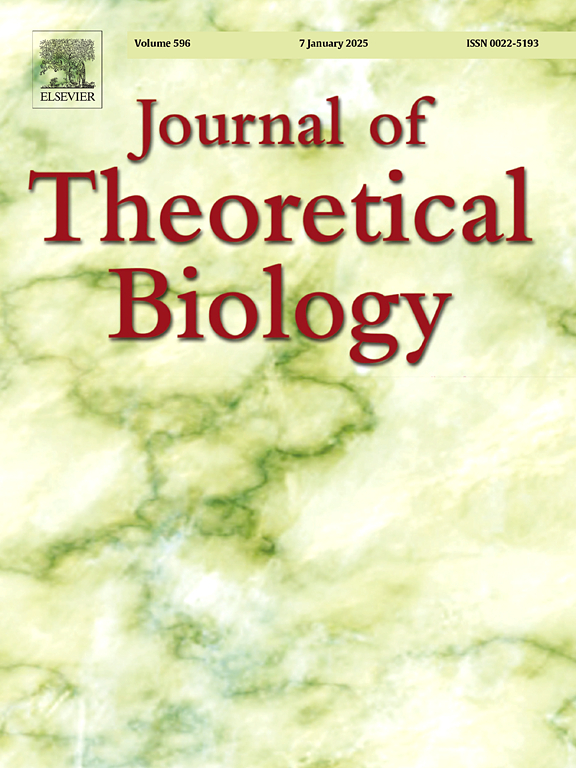肿瘤生长抑制模型的概率分析,支持试验设计。
IF 1.9
4区 数学
Q2 BIOLOGY
引用次数: 0
摘要
要从统计学角度证明一种治疗方法优于另一种治疗方法,需要足够大的患者样本量。然而,样本量过大不仅成本高昂,还可能导致研究结果具有统计学意义,但与临床无关。如何选择样本量是经典统计学中一个经过深入研究的问题,可以从适当的检验统计量得出分析表达式。然而,这些表达式需要有关疗效的信息,而这些信息可能无法获得,尤其是新开发的药物。肿瘤生长抑制(TGI)模型常用于量化新开发抗癌药物的疗效。在这些模型中,肿瘤生长动态通常由一组常微分方程来描述,其中包含的参数必须使用实验数据来估算。临床试验中广泛使用的一个终点是根据实体瘤反应评估标准(RECIST)框架确定的不同反应类别患者的比例。根据 TGI 模型,我们推导出了患者对联合疗法产生反应的概率分析表达式。将概率表达式与经典统计学方法结合使用,可推导出参数模型,用于比较两种治疗方法时达到一定显著性水平和检验功率所需的样本量。此外,概率表达式还用于推广肿瘤静态暴露概念,使其更适用于预测临床反应。概率表达式的导数被用来推导出另外两个表达式,以表征暴露及其敏感性。最后,我们使用根据临床前数据校准模型所获得的参数对结果进行了说明。本文章由计算机程序翻译,如有差异,请以英文原文为准。
Probabilistic analysis of tumor growth inhibition models to Support trial design
A large enough sample size of patients is required to statistically show that one treatment is better than another. However, too large a sample size is expensive and can also result in findings that are statistically significant, but not clinically relevant. How sample sizes should be chosen is a well-studied problem in classical statistics and analytical expressions can be derived from the appropriate test statistic. However, these expressions require information regarding the efficacy of the treatment, which may not be available, particularly for newly developed drugs. Tumor growth inhibition (TGI) models are frequently used to quantify the efficacy of newly developed anticancer drugs. In these models, the tumor growth dynamics are commonly described by a set of ordinary differential equations containing parameters that must be estimated using experimental data.
One widely used endpoint in clinical trials is the proportion of patients in different response categories determined using the Response Evaluation Criteria In Solid Tumors (RECIST) framework. From the TGI model, we derive analytical expressions for the probability of patient response to combination therapy. The probabilistic expressions are used together with classical statistics to derive a parametric model for the sample size required to achieve a certain significance level and test power when comparing two treatments.
Furthermore, the probabilistic expressions are used to generalize the Tumor Static Exposure concept to be more suitable for predicting clinical response. The derivatives of the probabilistic expressions are used to derive two additional expressions characterizing the exposure and its sensitivity. Finally, our results are illustrated using parameters obtained from calibrating the model to preclinical data.
求助全文
通过发布文献求助,成功后即可免费获取论文全文。
去求助
来源期刊
CiteScore
4.20
自引率
5.00%
发文量
218
审稿时长
51 days
期刊介绍:
The Journal of Theoretical Biology is the leading forum for theoretical perspectives that give insight into biological processes. It covers a very wide range of topics and is of interest to biologists in many areas of research, including:
• Brain and Neuroscience
• Cancer Growth and Treatment
• Cell Biology
• Developmental Biology
• Ecology
• Evolution
• Immunology,
• Infectious and non-infectious Diseases,
• Mathematical, Computational, Biophysical and Statistical Modeling
• Microbiology, Molecular Biology, and Biochemistry
• Networks and Complex Systems
• Physiology
• Pharmacodynamics
• Animal Behavior and Game Theory
Acceptable papers are those that bear significant importance on the biology per se being presented, and not on the mathematical analysis. Papers that include some data or experimental material bearing on theory will be considered, including those that contain comparative study, statistical data analysis, mathematical proof, computer simulations, experiments, field observations, or even philosophical arguments, which are all methods to support or reject theoretical ideas. However, there should be a concerted effort to make papers intelligible to biologists in the chosen field.

 求助内容:
求助内容: 应助结果提醒方式:
应助结果提醒方式:


